|
|
|
|
Curly BearWagner offers a Blackfeet perspective on thedeaths.
|
|
|
|
|
|
|
|
Catlin quote on Blackfeet shields
|
|
|
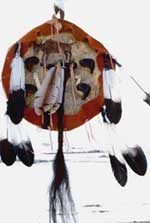
Shieldby Darrell Norman
Browning, MT.
Photo courtesy of Angelika Harden-Norman.
|
|
Blackfeet Shields
“Every warrior had a shield. Blackfeetshields were designed to give their owners both physicaland spiritual protection. They were made of thickbuffalo hide that at one time could resist the metalbullet from musket type rifles. The design on shieldscould represent various things such as coup marks,marks representing exploits of the owner, also imagesof animals" (Darrell Norman, 2002).
|
|
|
|
|
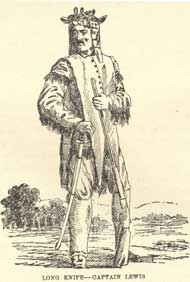
LongKnife - Captain Lewis
(Catlin:1891)
|
|
|
|
|
|
|
|
|
|
|
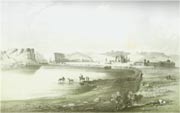
FortBenton
,
lithograph from original by John Mix Stanley, ca. 1854. (Stevens1861:101)
Courtesy of The University of Montana Mike and MaureenMansfield Library, Government Documents.
|
|
|
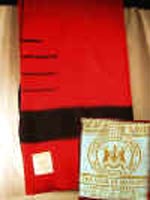 3.5 Point Hudsons Bay Blanket
3.5 Point Hudsons Bay Blanket
|
|
Great Falls > Culture > The Long Knives
|
|
|
1805
|
|
|
|
The year that Lewis and Clark traveled up the Missouriwithout seeing a single soul for hundreds of miles, theywere observed byat least one small camp of Blackfeet. After the long winter,extended families spread out to enjoy the first shootsand greens of spring and toreplenish their stock of meat. A woman named
Sikey-kio
,or Black Bear, was in such a camp near the mouthof Sun River. Seven decades later, when she was more than 100 yearsold, she told stories of the time when she first sawwhite men,several members of the Lewis and Clark expedition,in the early years of that century (Vaughn 1900: 395). |
|
|
|
Near mouth of the Sun River in Montana.
|
S. Thompsonphoto
|
|
|
|
|
1806
|
|
|
|
The account of Meriwether Lewis' encounter with the Blackfeet, in which two young Piegans lost their lives, has been told mainly through Lewis' journal. Research years later turned up the Blackfeet perspective on this fight.
In the early morning hours of July 26, 1806, Lewis and three members of the Corps of Discovery—the Field brothers and George Drouillard—had camped with eight young Piegans, whom they had met the day before. Lewis and his men awoke around 3 a.m. to find the Indians attempting to steal their rifles. The Indians were also driving off the party's horses. In the ensuing chase Reubin Field stabbed one Indian to death and Lewis shot another.
|
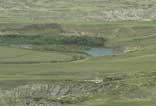 Two Medicine Breaks in Montana.
Two Medicine Breaks in Montana.
Image courtesy of K. Furrow.
|
|
|
|
|
Death of Calf-Standing-on-a-SideHill
|
|
|
"In 1895 Wolf Calf, "the mostaged of the Piegan Blackfeet" (102 at the time),told naturalist George Bird Grinnell about meeting "thefirst white men that had ever come into the lower country." WolfCalf, as a boy of 13, was with a war party to the southwhere they met these white people in a friendly fashion.The young Piegans were likely returning from a horseraid of a neighboring tribe, a rite of passage with youngmale Blackfeet. Their chief directed the young men tosteal some of Lewis' party's things, which they did.
"The white men killed "CalfStanding on a Side Hill"with their "big knives."Afterward the Piegans ran off someof the white men's horses. Wolf Calfreported the location as south ofBirch Creek. He said he did not knowwho Lewis and Clark were, but Grinnellbelieved that the story matched Lewis'journal so exactly to believe "thiswas the Indian side of the occurrence."When Grinnell asked why the Indiansdidn't pursue Lewis to retaliatefor these deaths, Wolf Calf saidthey were frightened and "ranaway"—just like Lewisand his men, only in the oppositedirection" (Wheeler 1904:311-313).
|
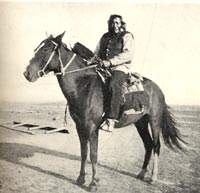 "Wolf Calf
"Wolf Calf
, oneof the Blackfeet whom Captain Lewis andpartyfought with on headwaters of MariasRiver, in 1806. This represents him in1895 when 102 years old" (Wheeler 1904:V.2.,313).[Photo given to Olin D. Wheeler by George Bird Grinnell]
|
|
|
|
|
Death of He-that-Looks-at-the-Calf
|
|
|
|
Wolf Calf's story tells of only one death in Blackfeetcountry, yet there were two. Another story collectedfrom the Piegansby frontier diplomat Maj. Alexander Culbertsonless than two decades after the event tells of aman named "He that Looksat the Calf" who was shot by the Lewis party.According to this account, collected in 1833and recorded by James H. Bradleyin the 1870s:
"Capt. Lewis had gone into camp onthe Marias unfurling his flag according to custom.In the evening a number of Piegans came into thecamp and were kindly received, but during the nighta part of the Indians ran off with some of Capt.Lewis' horses, when the rest were detained by himas hostages. The next morning one of the hostages,watching an opportunity, seized a horse, mountedhim and dashed away, when he was fired upon by asoldier and killed" (Culbertson in Bradley VIII: 135).
Thisincident generally conforms to Lewis' report. Interestingly,the first story tells of the killing by the "big knife,"and the other describes the shooting, but neithertells of bothdeaths. Wolf Calf must have been with the firstgroup and was unaware that a second man was killedafterward.
|
|
|
|
After the Deaths
|
|
|
|
After the two Piegan youths were killed in the encounter withMeriwether Lewis and his men, more unrest soon followed.
In 1807 the Bloods, perhaps in retaliation for those deaths,pillaged and burned Fort Augustus on the North SaskatchewanRiver. Ironically, the Bloods' chief, Old Swan, had providedindirect help to Lewis and Clark just a few years before.Old Swan had mapped the rivers and landmarks of the UpperMissouri for Peter Fidler, a well-known geographer for theHudson's Bay Company. This information found its way ontothe 1802 Arrowsmith map, which Lewis and Clark relied on.
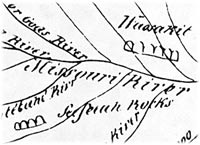
View 1801
IndianMap of Upper
Missouri
, given to Peter Fidler
by Ac-ko-mok-ki (redrawn by Fidler)
|
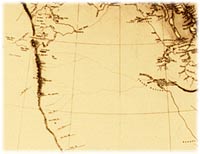
View 1795 (with1802 additions)
Aaron Arrowsmith Map of NorthAmerica
, from Library of Congress.
|
In 1810 David Thompson finally crossed over tothe west side of the Rockies. There this famous trapperfor the North WestCompany established Kootenay House. During thistime explorers for John Jacob Astor's Pacific FurCompanyestablished Fort Astoria at the mouth of theColumbia River and claimed that country for the Americans.
Astor's planned American trading empire didn't last long. With the War of 1812 looming, he quickly sold out to the French-Canadian North West Company. The irony is that the Blackfeet had inadvertently won the country for their enemies. When the Piegans refused to let Thompson through the Rockies to the Kootenai, the explorer had to improvise:
|
"The murder of two Piegan Indiansby Captain Lewis of the U. S. drew thePiegans to the Missouri to avenge their deaths; and thus gaveme an opportunity to cross the mountainsby the defiles of the Saskatchewan River which led to the headwaters ofthe Columbia River" (Thompson: 1916). |
When the Piegans learned of Kootenay House, they sent a warparty of 300 men to destroy it. Thompson's diplomatic skillsprevented a calamity.
Before the first decade of the 19th century ended, fur tradersarmed enemies to the west and south of the Piegans. ManuelLisa's group of 40 men, accompanied by two members of theLewis and Clark expedition, George Drouillard and John Colter,established Fort Remon at the mouth of the Bighorn River onthe Yellowstone, right in the heart of Crow country.
Two of these events had serious consequences for the Blackfeetand the Americans. First, after the deaths in the Lewis encounter,the Blackfeet were very aggressive toward Americans. The Blackfeetdistinguished the Americans from Canadians and other Europeansas "long knives" because of the six-feet-long espontoons favoredby American soldiers of the period. Second, the arming ofthe tribes west of the mountains and south of the Missouricreated a new balance of power. In 1810 the newly armed Flatheadsaggressively crossed the mountains in search of their enemies,the Blackfeet. The Flatheads won. Whites also fought withthe Flatheads. Independent American and Canadian trapperstraveled with the Flatheads for protection. That worsenedthe animosity the Blackfeet had toward the Flatheads. As aresult, the Blackfeet began killing and terrorizing Americans.The Blackfeet considered them trespassers and poachers. Theystole their goods to trade with Canadians. For the next quartercentury all attempts to establish the fur trade in the UpperMissouri country were thwarted by the Blackfeet.
|
"The thing about Lewis and Clark was that they were insignificantto us in some ways and yet they were so significant subsequentto the initial contact. They didn't realize back then howimportant the Missouri River was (to us), that it was anatural highway.... Somebody once asked me, 'How come youwere so warlike, and why were other tribes afraid of you,and why were the new settlers afraid of you?' We were justdoing what anybody else would do, which was protecting ourland" (Narcisse Blood, personal interview, 2001). |
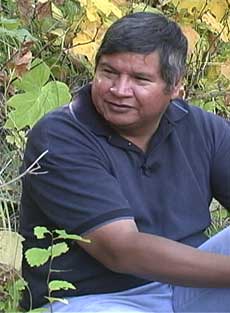 Narcisse Blood
Narcisse Blood
.
Image courtesy of K. Furrow.
|
|
|
|
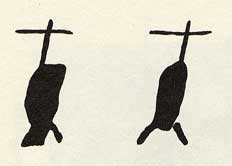 (Raczka: 1979)
(Raczka: 1979)
|
1831- When the whites from the south and north met
In 1831 the first American post was established among the Blackfoot—Fort Piegan—at the mouth of the Marias River. Jacob Berger, a former employee of the Hudson Bay Company, and a fluent Blackfoot speaker, led a small party into the Blackfoot country to ask permission to build a fort to trade with the Blackfeet. |
|
|
|
In the spring of 1831 construction was started on the fort. Under James Kipp the fort offered higher prices than the Canadian companies and in a very few days obtained 6,450 pounds of beaver skins (Bradley, Book "F": 244-247).
This would be roughly 19,350 beaver skins.
This may also be the year Brings-Down-The-Sun was born. He told McClintock he was born the year "...when white men were seen for the first time in our country" (McClintock, 1910: 423). |
|
|
|
American Fur Trade
|
|
|
|
Finally, in 1831 the American Fur Company, another venture by Astor, managed to establish an American presence in a precariously balanced relationship with the Blackfeet. Their first trading house on the Upper Missouri was Fort Piegan, at the mouth of the Marias River. Although short-lived, it was replaced with Fort McKenzie, where German Prince Maximilian and artist Karl Bodmer visited in 1833. |

Missouri River
at the mouth of the Marias, Montana
Image courtesy of K. Furrow.
|
During the 1830's, the Blackfeet were trading some10,000 bison robes each year, bringing about significantchanges to theirway of life. Bison were killed for their hides,beyond what was needed for food. Men started takingmultiple wives toprocess all the hides, and the trading housewas added to the seasonal round.
The spring of 1837 brought another devastating round of smallpox, carried upriver by steamboat. Maj. Alexander Culbertson, a fur trader and mountain man, tried to keep the Piegans and Bloods who were camped by the fort from coming aboard the ship, but they were eager to trade and were unable to understand the consequences. Exposed to this dreaded disease, they returned to their family camps, carrying the enemy within them. After two months without contact with the Blackfeet, Culbertson headed to the Blackfeet's usual late-summer camp area at the Three Forks to learn for himself what had happened.
|
|
|
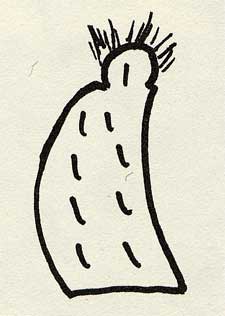 (Raczk:, 1979)
(Raczk:, 1979)
|
1837- Year of smallpox
"A few days travelbrought him in sight of a villageof about sixty lodges. Not a soulwas to be seen, and a funeral stillnessrested upon it. They approached withanxious hearts and awed by the unwontedquiet, for the vicinity of an Indianvillage is not apt to be the sceneof oppressive silence. Soon a stenchwas observed in the air, that increasedas they advanced; and presently thescene with all it's horror was beforethen. Hundreds of decaying forms ofhuman beings, horses and dogs layscattered everywhere among the lodges....Twoold women, too feeble to travel, werethe sole living occupants of the village" (Bradley, III: 221-225).
|
|
|
|
|
More than 6,000 Southern Piegans and Bloods died that year.The two old women may have survived the smallpox epidemicof 1764, explaining their resistance.
The Blackfeet maintained good relations with the American FurCompany traders during the 1830s, but they killed independenttrappers each year. Representatives of the Rocky MountainFur Company had little luck establishing good relations withthe Blackfeet.
 Fort Benton. G. Sohon, 1860.
Fort Benton. G. Sohon, 1860.
Courtesy of Smithsonian Institution.
|
The trade in robes steadily increased. In1841 more than 20,000 bison hides were traded by the Blackfeet.During the 1840s the Blackfeet had their first visit fromthe "Black Robe Medicine Men," the Jesuits, with whom theyestablished good relations. The center of trade shiftedseveral miles upriver, first with Fort Lewis, then acrossthe river to Fort Benton. |
|
At Fort Benton, 2,415 miles from St. Louis, theBlackfeet could get 25 loads ammunition, a gallon kettle, threeknives, or 1 1/2 yards of calico in exchange for one buffalorobe. For three robes they could get a 2 ½ point wool blanket(points refer to the number of stripes on the blanket), and 10robes would buy them a gun (Hungry Wolf, 1989: 10). |
 Fort Benton trade goods.
Fort Benton trade goods.
Image courtesy of S. Thompson.
|
|
|
Background: Frompainting of young Blackfeet chief,
by John Mix Stanley, ca.1853. Courtesy of Nancy Hubble.
|
|
|
|









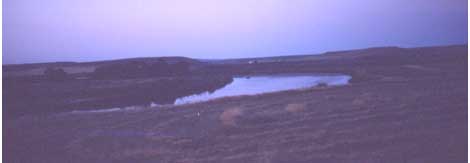




 Narcisse Blood
.
Narcisse Blood
.



